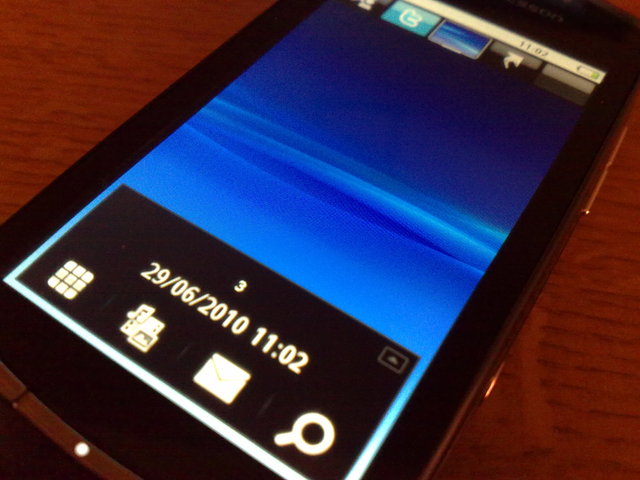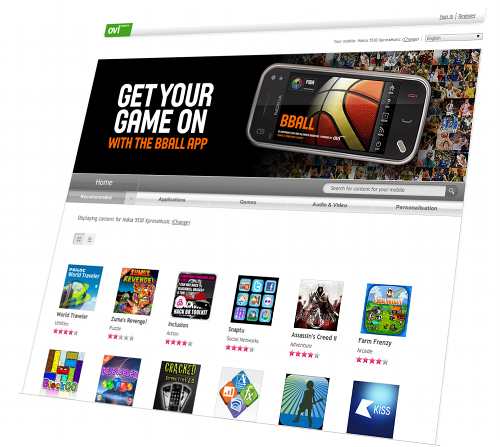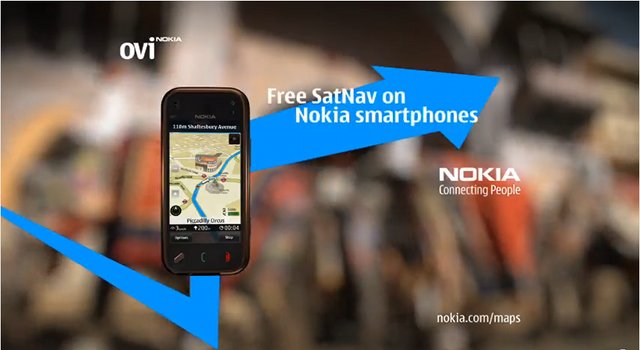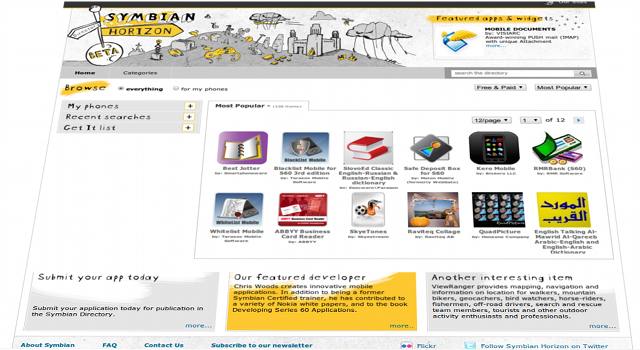As I recently wrote, the application store has become an integral part of the smartphone experience. Nokia have gone beyond the app store idea, by building up the Ovi service brand, available only to Nokia phones. It's fair to say Ovi has had mixed results, with Maps and Mail being the most notable successes. By doing this Nokia have provided Symbian users with a compelling user experience over and above the base platform.
Ever since its formation, Symbian has been a multi-manufacturer platform, but thus far none have created any type of ecosystem that could rival the Ovi brand. Of course, Sony Ericsson has the PlayNow web-based application store. However, the the breadth of content just isn't there yet, and they need a dedicated application (or at least widget) rather than using a totally web-based system.
Up until now, non-Nokia Symbian device makers have concentrated on making attractive hardware. Examples being the Sony Ericsson Vivaz and the Samsung i8910 HD. While those designs might be enough to make consumers buy into those brands for the first time, the user experience, as we've mentioned in our reviews, has in many cases not been good enough. Sony Ericsson have made attractive customisations to Symbian^1, although the gaps between the base OS and their own work are clear to see.

Sony Ericsson's take on the Symbian^1 home screen
After having used a mobile platform with a comprehensive ecosytem, it's a noticable absence when moving to a phone without. For example, the HyperX firmware of the Samsung i8910 HD provides a pleasing Symbian^1 user experience, with its capacitive screen, kinetic scrolling and various home screen modes. In spite of this, it does somehow feel like stepping back in time two or three years, as there is no accompanying service layer. Moreover, there is no application update system (short of flashing the entire firmware and losing everything) and no application store. Of course, in this context, users of this particular OS will be power users who don't need that support system. However, the point is that not having any sort of ecosystem to support the use of a phone is noticeable, the device is effectively isolated.
This is perhaps best illustrated by the app store effect. For most users, the fuss-free method of getting applications via a store is going to be the way forward. Therefore, after using a brand of phone which doesn't have that functionality built-in, how likely is it that they would buy twice? Of course, there is the demographic of users who never install any applications, but this is surely a dwindling segment as awareness of applications slowly enters the mainstream. What applies to the app store now will apply to the wider service layer in time.

The Ovi Store
Of course, everything has to come down to business decisions. I would argue though that creating an ecosystem that consumers will buy into is a good business decision, as it will likely lead to repeated sales and has the opportunity for other revenue sources. The precedent is already there - to put it bluntly, why buy a non-Nokia Symbian phone at the moment when Nokia offers a largish app-store and free Sat-Nav?

Free navigation with Ovi Maps is one of the most notable elements of Nokia's service layer
Moving forwards, it is clear that the main differentiation between Symbian phones from different manufacturers will have to come in the service layers. Nokia has a clear vision with Ovi, even if its execution has, in some areas been poor. However, is it really possible for any other manufacturer to contemplate a service layer on the scale of Ovi? Currently only Google and Microsoft seem willing to make a similar level of investment.
Given the open ethos at the heart of the Symbian Foundation and Nokia's well documented preference for co-operation, it is not surprising that the question of whether Nokia will open Ovi to other manufacturers is frequently asked. However, Nokia's openness only ever extends as far as business logic dictates. Currently there's little incentive for Nokia to extend its Ovi ecosystem beyond its own borders. How long that will remain true is open to debate, but that's a discussion for another time.
No one questions the need for Symbian to attract additional manufacturer partners to help counter-balance Nokia's influence. Nokia would be happy too - after all, the reason they set up the Symbian Foundation, at no little expense, was to enable others to share the costs involved in developing the platform.
Other high-end smartphone platforms have a service layer. Symbian is a high-end platform too, and therefore why shouldn't other manufacturers provide a service layer for their Symbian devices? The minimum requirement should at least be an application store. Every incidence of an application store provides a common user experience and opportunity for growth in both the developer community and revenues.
It isn't as if some of the work towards a non-Ovi app-store hasn't been done already. Last year, Rafe reported on the Symbian Foundation's Horizon project. This is a project that would, in principle, provide a universal catalogue for other application stores. This could be the ideal way to encourage more developers to engage with the new world of Symbian. One thing developers don't want is more friction when trying to get their work put in front of a wider audience. If there were multiple manufacturer-specific application stores, there would be that many more approval processes for developers to get through. Horizon would provide a single point of entry for developers with multiple points of delivery and income - surely the best of both worlds?
Could this model be applied elsewhere?

The Symbian Horizon homepage
David Gilson for All About Symbian, 27th July 2010.
